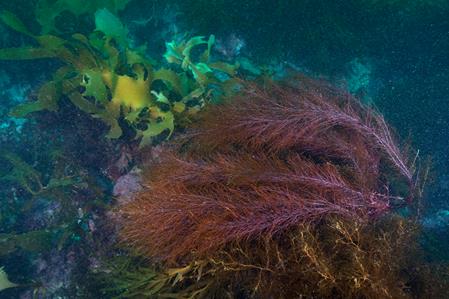General Description
Formed of a cluster of sub-parallel filaments or branches (fasciculate) with numerous straight main axes with long straight secondary axes (laterals) arranged in a radial pattern. Apical tips are blunt or enlarged and round. Can have filament-like hairs near tip. Holdfast disc-like (discoid) to lobed with wart-like growths (verrucose). Dark brown. Up to 50 cm long (thallus).
Biology
Small caprellid crustaceans, Paraproto tasmaniensis, attach to this alga. Unique organic compounds called phenols have been found in this seaweed. Similar phenols are used as a precursor for materials such as plastics.
Habitat
Subtidal rocky reef, rough water coasts, to depth of 15 m.
Reefs
Distribution guide
Australia.
Species Group
Seaweeds and seagrasses › Brown algae
Depth
Water Column
Max Size
50 cm
Diet
Photosynthetic - sunlight
Commercial Species
No
Global Dispersal
Native to Australia
Identify
Conservation Status
- DSE Advisory List : Not listed
- EPBC Act 1999 : Not listed
- IUCN Red List : Not listed





